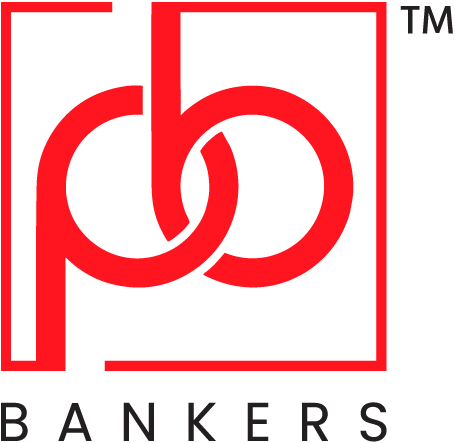The Key Wealth Building Strategies in Canada

What is IBC and How Does it Work in Canada?
The Infinite Banking Concept is a simple financial strategy that helps you grow your wealth by acting as your own banker using dividend-earning and participating in whole life insurance policies. This strategy involves creating a personal banking system to fund significant purchases or investments without relying on traditional banks or third-party lenders. With an infinite banking policy, you can finance your own borrowing, avoiding interest payments to external entities. It’s important to note that this policy is not a bank account but a tool to support your personal borrowing needs while ensuring continuous wealth growth.
Although initially developed in the US, this concept can be applied in Canada with a slight modification. This is due to the withdrawal and tax-free policy loan limits influenced by the policy’s adjusted cost base (ACB). We’ll delve deeper into this aspect in the following section of the article.
Many wealthy Canadians and those aiming to grow wealth beyond stocks and real estate find the infinite banking strategy appealing. This is because a participating whole-life policy offers a range of benefits to the insured and the policy owner, such as tax shelter and/ or tax deferral for compounded wealth growth, a more predictable asset growth, and an increased net estate value, among other advantages.
To begin Infinite Banking in Canada, you should acquire a participating whole life insurance policy, typically from a mutual life insurance company. This policy should be designed to minimize insurance costs, ensuring that a significant portion of your deposit contributes to the cash value component. This approach maximizes annual dividends, increasing wealth accumulation in the long run.
Achieve this by collaborating with a life-licensed Canadian financial advisor well-versed in the workings of infinite banking in Canada. If you reside in Toronto, you can schedule an appointment with us. We’ll assist you in establishing a policy tailored for infinite banking and wealth accumulation objectives.
Indeed, you’re someone dedicated to prioritizing wealth-building. Your commitment to financing and consistently following the long-term plan is crucial for unlocking the complete advantages of infinite banking. This approach ensures you fully harness the wealth-building opportunities within the Canadian insurance industry.
Once your approval is granted, it’s crucial to actively fund your personal banking system over the next 10 to 20 years, similar to a traditional investment strategy. The duration of your contributions will vary based on the amount you contribute monthly or annually. As opposed to the common practice of minimal contributions in life insurance contracts, you need to invest a higher-than-usual amount regularly here. This accelerates the growth of your bank’s capital, enabling it to finance your future loans. Remember, this isn’t just about purchasing life insurance; you’re constructing an intergenerational wealth strategy with a banking function to aid your borrowing needs.
After your policy’s cash values are set, you can use it to fund planned expenses like buying a vehicle, furniture, your children’s post-secondary education, real estate acquisitions, or other investment opportunities. At this point, instead of seeking traditional car loans, you can conveniently borrow against your policy (take a policy loan). This allows you to pay for your car in cash and manage your policy loan payments like you would handle financing from a dealership or a bank.
Borrowing against your policy accumulates guaranteed cash values and dividends annually, compounding and growing tax-free. Meanwhile, you use the insurance company’s funds to finance life events or significant purchases.
This is a key benefit of building wealth within participating Canadian insurance policies. Not only that, but you also sidestep concerns about facing negative returns on your assets, as often seen in mutual fund investments or the stock market. The savings component of your policy consistently grows each year, unimpacted by market volatility or crashes.
What Are the Advantages of Infinite Banking?
There are numerous benefits to accumulating wealth through life insurance and implementing the Infinite Banking Concept in Canada. A significant benefit is the potential for tax savings. Although your policy contributions aren’t deductible against active income, your death benefit and wealth grow tax-free over time, and the asset accumulation remains tax-free unless withdrawn. Moreover, when you leverage your policy to fund an investment or business, the interest on the loan is often tax-deductible.
Another pro of the Infinite Banking Concept is the potential for increased asset growth. This comes from the opportunity to earn interest on your own loans. Instead of paying interest to an external bank, you pay your insurer interest by borrowing against your policy’s cash value. The interest earned by participating whole life policies is shared among policyholders, contributing to higher dividend earnings and boosting your estate value and wealth.
Lastly, Infinite Banking allows you to establish a safety net for yourself and your family. In the event of your passing, your policy’s death benefit will be passed to your beneficiaries tax-free. The primary coverage of your policy can assist your loved ones in managing expenses such as funeral costs and outstanding debts. Furthermore, if you have a long life, you’ll have the opportunity to leave a substantial legacy to your heirs, even after borrowing funds from your personal banking system multiple times throughout your lifetime.
What Are the Disadvantages of Infinite Banking Concept
Indeed, it’s essential to address both the pros and cons of the Infinite Banking Concept in Canada. Among the drawbacks, one significant disadvantage is that this concept may not be suitable for everyone. Specifically, one limitation is the inability to borrow money from your policy immediately. This is because there isn’t enough cash value in your policy yet; essentially, there’s nothing to borrow or use as collateral for a policy loan in the early stages.
Before becoming an infinite banker and using your policy for significant purchases, it’s crucial to first “build your bank.” Therefore, the infinite banking concept is not advisable for those living paycheck to paycheck or lacking sufficient funds to establish their own banking system. The monthly contributions needed for this concept may be deemed costly, especially for those whose focus isn’t on wealth building and whose finances are already committed to various obligations. Remember that the early years require substantial monthly or annual contributions beyond the usual amount to fully embrace the infinite banking concept and eventually become your own banker.
In his book “Becoming Your Own Banker,” R. Nelson Nash compares this concept with building your own business or bank – capital is essential for both endeavors! The good news is that you don’t need to make a lump sum deposit to kickstart your banking business. Instead, you can gradually fund your personal bank by making monthly or annual contributions. This process may take a bit longer in Canada, at least within the next 10 years, due to MTAR limits. Does this mean you have to wait a decade before borrowing? Not at all! Once your bank accumulates sufficient funds, you can borrow as much as 90% of your cash value. Just remember, it’s essential to repay it to ensure the stability of your banking system!
In his book, R. Nelson Nash emphasizes the significance of repaying your own banking system multiple times because it constitutes a crucial element of the strategy. While this aspect is vital, it can also be viewed as a potential drawback since some individuals may hesitate to repay a loan they see as “their own money.” Nash compares it to a grocery store in his book, explaining that if the owner takes items without paying, similar to what customers do, the business could collapse due to internal theft. He stresses the necessity of paying for taken items for the business to thrive. This analogy aligns with the concept of becoming your own banker – failing to repay borrowed money could lead your bank to financial trouble!
In the United States, you can continue making tax-free policy borrowings from your personal banking system without significant concern for potential tax consequences on policy loans. However, when practicing the infinite banking concept in Canada, it’s crucial to note that your policy’s adjusted cost base or ACB may eventually decrease to zero. At this juncture, a policy loan could trigger a taxable event, becoming subject to taxation. As individuals age, the ACB of a permanent life insurance policy tends to decline. This trend benefits business owners considering corporate-owned life insurance policies, as it contributes to a higher capital dividend account. This, in turn, enables tax-free distribution of life insurance proceeds from the corporation to your heirs.
For better comprehension, let’s briefly define a life insurance ACB: the adjusted cost base is the total of premiums paid, subtracted by the accumulation of the net cost of pure insurance (NCPI). As individuals age, insurance costs rise, corresponding to an increase in the net cost of pure insurance. The ACB gradually diminishes to zero when the annual net cost of pure insurance surpasses the premiums contributed to the policy. Typically, this occurs in the policy’s later years, and such changes are outlined in your policy’s annual statement.
When it reaches here, the viability of the infinite banking concept, which advocates utilizing policy loans for financing instead of seeking funds from external lenders like a bank, may diminish. This is particularly relevant regarding tax planning, as policy loans become taxable once the policy’s ACB reaches zero.
Does this imply you can no longer utilize the wealth accumulated within your “own banking system”? As I often advise my clients, numerous options are available in old age when you have financial resources. However, there’s only one option when you lack them—continuing to work.
The adjusted cost base of your policy reaches zero during your retirement years, not while you’re still actively employed. Instead of persisting with policy loans and facing taxes on these loans, shifting your strategy to an insured retirement plan is advisable. With the wealth already accumulated in your policy, you can seamlessly transition your borrowing. As you might be aware—third-party borrowing is tax-free.
You will realize that paying interest on a secured bank loan is a more effective tax-planning strategy in old age than dealing with taxes on policy loans or withdrawing taxable funds to meet your retirement income requirements.
If your retirement expenses amount to $50,000.00 per year, and you receive $14,400.00 from the Canadian Pension Plan and Old Age Security, there remains a shortfall of $35,600.00. Ideally, this deficit should be covered by your retirement savings or accumulated wealth.
Here, you have a couple of choices: utilize tax-free funds (like a bank collateral loan), opt for a taxable policy loan, or make a taxable withdrawal from a retirement account, such as an RRSP. If you withdraw taxable funds, your retirement tax bracket increases, as it’s calculated based on the $50,000.00 requirement. On the other hand, leveraging your insured retirement plan with a bank’s money maintains a lower tax bracket, determined only by your taxable government pensions of $14,400.00. Therefore, despite paying interest to a third-party bank, you ultimately save money because you incur lower income taxes in retirement.
Option 1: Incur taxes on an annual income of $50,000.00.
Option 2: Incur taxes on an annual income of $14,400.00.
Which option would be more advantageous?
Why Utilize Participating Whole Life for IBC?

There are several compelling reasons why opting for participating in whole life insurance in infinite banking can be a wise decision. But before delving into those, let’s understand what participating whole life insurance entails. This policy integrates two financial products—a life insurance contract and a dividend-paying savings account. The synergy of these components allows you to cultivate tax-free asset accumulation within your policy, providing a means to finance significant purchases and life events or cater to your financial needs in retirement.
In contrast to universal life insurance, the growth of cash value and death benefit in participating whole life insurance is not reliant on market volatility. Every year, life insurance companies reliably pay dividends to policyholders. This has been happening since the whole life insurance was introduced. The typical dividend scale ranges between 4% and 7%, with most Canadian insurance carriers offering an average dividend scale of 5%. The majority of insurance companies have a dividend scale of 6.05%. This equates to an average return of 6.05% on a mutual fund investment without market fluctuations, coupled with a tax-free death benefit in the event of your passing while still accumulating wealth. Additionally, there’s the potential to leave a tax-free financial legacy to your loved ones after using the policy to fund your retirement.
These figures may not generate much excitement among most Canadian investors who come across this article. However, a crucial point to remember is that when building wealth with participating whole life insurance, you are shielded from negative returns, irrespective of market conditions. While the prospect of a 20% return in a given year may thrill many investors, it’s essential to acknowledge the potential for negative returns, even as steep as negative 20% or more, in some years. The returns may seem less exhilarating with participating in whole life insurance, yet they offer peace of mind during market downturns. Your policy earns a dividend yearly regardless of market conditions, ensuring you never experience a losing year. Participating in a whole life insurance not only spares you from the emotional roller coasters associated with volatile market instruments but also provides an opportunity to construct a more predictable and steady stream of wealth—not just for yourself but for the next generation through a tax-free wealth transfer.
Another crucial point to emphasize is that participating whole life insurance is excellent collateral for both policy and bank collateral loans, thanks to its non-volatile returns. Obtaining a policy or bank collateral loan with participating whole life insurance is generally more straightforward compared to universal life or standalone investments, which are susceptible to negative returns. In times of market downturns, the cash values in a universal life insurance policy and the market values of standalone investments often decrease, resulting in lower returns when the markets are down. This underscores the advantage of utilizing participating whole life insurance as collateral, offering stability and reliability even during market fluctuations.
The cash value of a participating whole life insurance policy remains unaffected by market fluctuations. When you require funds, simply inform the insurance company where to transfer the money. There’s no requirement to shift your portfolio to a daily interest account, as seen in the case of universal life insurance. This differs from borrowing against a standalone investment, where lenders may hesitate to provide funds when the collateral is invested in a volatile portfolio. With participating whole life insurance, stability prevails, allowing seamless access to funds without needing portfolio adjustments.
Moreover, borrowing against your personal banking system (utilizing participating whole life insurance) not only grants you the advantage of your own interest on the loan but also contributes to an increase in the dividend distribution. The interest earned by the insurance company’s participating policy funds enhances the growth of your cash value accumulation. This is a pivotal benefit of employing whole life insurance for infinite banking, offering swift access to funds and fostering a higher net worth through self-financed loans.
How to Get Started with Infinite Banking in Canada
If you’re eager to begin your journey with Infinite Banking in Canada, consider collaborating with a licensed life insurance advisor. Choose an advisor with access to participating whole-life policies and can assist in achieving your infinite banking objectives. If you currently don’t have an advisor experienced in setting up infinite banking in Canada, feel free to schedule an initial consultation with us. We’ll guide you in developing a financial plan specifically emphasizing infinite banking.
Mutual Life Insurance Companies in Canada
The primary providers of participating whole life insurance policies in Canada are mutual life insurance companies. These companies distribute dividends to policyholders participating in life insurance, effectively making them partial owners of the company. Equitable Life stands out as one of Canada’s largest mutual life insurance companies. However, numerous other life insurance companies also offer participating whole-life policies. Notable examples include Manulife, RBC Life Insurance, Industrial Alliance, Canada Life, and Sun Life.
The advantages of infinite banking go beyond mere financial considerations. Whole-life policies serve as an asset safeguarding your funds within the policy from liquidation in scenarios involving lawsuits or credit issues. They prove to be an effective estate planning strategy, enabling you to pass on wealth to the next generation tax-free. This ensures that more of your assets reach your loved ones compared to leaving wealth in other forms.
Mutual life insurance companies in Canada play a crucial role in fostering the enduring advantages of the infinite banking concept. This concept hinges on cash value accumulation within an insurance policy, enabling you to take loans against it and progressively build your wealth. By borrowing against the policy’s cash value, you circumvent paying interest to external entities. Instead, you leverage your own interest payments to enhance your personal wealth and establish a lasting legacy. The ability to transfer wealth across generations is uniquely empowered by participating in whole life insurance and the infinite banking concept.
IBC – Becoming Your Own Banker
Becoming your own banker revolves around the concept of infinite banking, allowing individuals to spend, invest, and borrow money to address their financial requirements. The pivotal aspect of this system involves utilizing the borrowed funds for a designated purpose, allowing the generation of income even while the funds are being spent.
Infinite banking starts with the acquisition of a whole life insurance policy, offering both savings component and death benefits. The funds accumulated within the policy experience consistent growth through dividends that are distributed annually.
The interest on your loan contributes to the growth of your wealth, as your policy engages in the interest earnings of the insurance company’s participating policy funds every time you borrow from “your own bank.” The accumulated cash values in your policy will ultimately empower you to assume the role of your own banker.
Is Infinite Banking Worth It?
Determining the worth of the infinite banking concept is subjective and depends on your individual financial circumstances. If you are seeking a method to increase your wealth, attain financial independence, and are willing to commit to long-term wealth accumulation, then the infinite banking concept might be a suitable option for you.
By leveraging participating whole life insurance as your base, you can utilize the accumulated cash value to borrow funds from your personal banking system. This strategy enables you to generate income even while spending, and over time, the interest on these loans contributes to further wealth growth.
Unlocking the full potential of infinite banking involves strategically channeling funds into your participating whole-life policy during its initial years and borrowing judiciously, specifically borrowing from your banking system. This approach can lead to substantial wealth growth in the long run.
As stated earlier, it’s crucial to understand that the infinite banking concept isn’t suitable for everyone. You must set aside sufficient funds to establish your banking system, and prudent borrowing practices are essential—even when you are your own banker. Repaying loans against your policy is imperative, just like fulfilling obligations to an external lender like a bank or a local credit union. Neglecting this responsibility could lead to the collapse of your personal banking system!
If you’re ready to incorporate participating whole life insurance for wealth building and handle your finances wisely, you can tap into the benefits of infinite banking. Combine this with a secured retirement plan for a unique approach to building lasting family wealth.
Infinite Banking Pioneer – R. Nelson Nash
In the 1980s, American economist and author R. Nelson Nash introduced the revolutionary concept of infinite banking. Essentially, this idea empowers individuals to “become their own banker,” eliminating the dependence on traditional banks and financial institutions for financing needs, whether it’s borrowing, purchasing a vehicle, investing in real estate or acquiring business equipment.
Beyond serving as an alternative to traditional bank borrowing, the “becoming your own banker” concept was crafted to privatize family wealth. This not only facilitates advantageous borrowing but also holds the potential to foster intergenerational wealth-building. As commonly understood, wealth passed down through a life insurance death benefit is tax-free for the beneficiaries.
The strategy involves diligently funding participating whole life insurance in its initial years to enhance its cash values through guaranteed cash value and policy dividend earnings. Once the policy accumulates sufficient funds, the owner utilizes it as collateral to secure policy loans for various expenditures. In the United States, it is recommended to repay these loans similarly to a third-party lender, adhering to the designated interest rates. Before borrowing from your personal banking system, it’s advisable to assess the cost of borrowing from an external lender, including monthly or bi-weekly payment amounts and the total payments required over the loan term. You then replicate these payments on your policy loan, paying the exact interest amount as if borrowing from an external lender. The distinction lies in the ownership of the institution you borrow from.
In Canada, you can achieve this by repaying the loan based on the interest rate set by the insurance company. If the interest rate on a third-party loan is higher than that of the insurance company, any surplus interest earnings can be directed into the policy through the additional deposit option (ADO), provided it’s not already utilized by your existing monthly contribution. Otherwise, you adhere to the interest rate set by the insurance company. While matching the exact interest rate of a third-party lender may not be feasible, your funds within the policy continue to accrue dividends as you leverage the insurance company’s capital for your purchases. Simultaneously, you partake in the interest earned by the company’s participating policy funds from your own borrowing, a portion of which is distributed to all participating policyholders. Essentially, the more policyholders borrow from the insurance company’s par funds, the more it earns, leading to an upward trend in dividend distribution for everyone.
If your income is substantial or you possess the financial capacity to sustain the policy’s accumulation phase, infinite banking could be an ideal solution. This approach allows you to save on interest that would have otherwise been paid to another institution and facilitates the creation of intergenerational wealth. This transformative impact extends beyond your own life, influencing the financial trajectories of your children and even your grandchildren. As the tax-free death benefit and knowledge of this concept are passed on, it becomes a legacy for the next and future generations.
Embracing this path toward financial freedom is a positive stride that ensures wealth remains within the family, setting the stage for each succeeding generation to surpass the wealth of the previous one. It is a potent tool capable of liberating you from debt and propelling your wealth to unprecedented heights.
Kyla Lovell is a financial expert that teaches the Infinite Banking concept utilizing whole life insurance. This concept creates financial wealth by creating your own personal bank. Get your free Infinite Banking report for more information on the concept.
Quick Contact